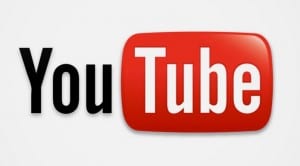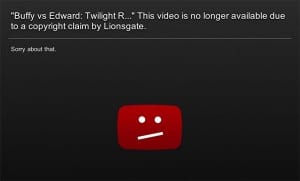Why YouTube Makes So Many Copyright Mistakes

In December, Forbes predicted that copyright would be YouTube’s biggest issue for 2019. While that’s a fairly safe decision in any year, it has proved especially prescient this year.
To put it mildly, YouTube’s copyright system is a mess. Whether it’s mass copyright claims being filed against seemingly licensed content, abusers attempting to extort money via the copyright strike system, videos being incorrectly targeted for removal or accusations that the process has become a tool for censorship, YouTube’s copyright follies have been front and center in 2019.
All of this, to be clear, is without Article 17 (formerly Article 13) and the changes it could bring to YouTube’s copyright systems. Even as YouTube continues to whinge at the potential impacts of Article 17, its current copyright system appears to already be falling apart.
This raises a pair of questions: Why does YouTube’s copyright system make so many mistakes?
In general, it’s not the tech or the law that is failing YouTubers, but humans. Whether it’s the people who work at YouTube, the people who submit content to the filters or uploaders themselves, most of YouTube’s copyright laws come from the people that build and use the system.
Source 1: Copyright and Other Misunderstandings by YouTubers

To get the controversial answer out of the way, copyright and licensing is extremely complicated and many YouTubers don’t have a very firm grasp on it. Whether it’s the nuances of fair use or the ins and outs of music licensing, YouTubers are often poorly equipped to understand and discuss copyright.
“No copyright infringement intended” and statements insisting that a clearly infringing use is a fair use are rampant on YouTube. But even in cases where users do make an earnest attempt to understand and follow the law, there are serious pitfalls.
For example, it’s entirely possible for a user to secure a license to use a song from a record label not knowing they also have to license the composition. Got permission from a video game developer to do Let’s Play videos? What about all of the musicians involved in the game, as with Beat Saber?
Likewise, it’s just as easy to misunderstand fair use and overplay your hand there. After all, fair use is famously complex and there are no hard and fast rules for what is and is not a fair use.
Copyright, even at its easiest, is complicated and things are made worse by YouTube’s system which can routinely punish users for non-infringing materials.
For example, if YouTube detects content from a third party in your video, they often will simply claim the revenue in that video for themselves. However, this isn’t necessarily a copyright issue. YouTube has sole discretion over what content is allowed to be monetized and by whom.
YouTube taking your revenue isn’t a copyright decision, they’re not saying that your work was infringing (even if they call it a copyright claim). Instead, they’re saying that, based on their policies, they are demonetizing the video and giving revenue to a third party. This isn’t copyright at play, it is YouTube’s policy that’s doing the work.
After all, there’s nowhere in copyright law that states YouTube has to give anyone any revenue. The if and how of YouTube’s revenue split is wholly YouTube’s creation. YouTube may, as a policy, allow monetization of fair use content, but that doesn’t mean it has to follow fair use when making its decisions.
Source 2: Bad Content ID Database

Months after the developers behind Beat Saber worked with musicians to stop copyright issues on Let’s Plays of the game, YouTubers were suddenly getting fresh copyright claims, this time from the NBC Universal and the Jimmy Fallon show.
The reason was because NBC Universal is a Content ID partner and, after Jimmy Fallon played the game on his show, it uploaded the episode to Content ID and didn’t omit the Beat Saber footage. This caused Beat Saber videos to get dinged.
While a few tweaks to Content ID could have prevented this from happening to older videos, it’s still on NBC Universal to ensure they don’t submit content to Content ID they don’t own.
This actually happens a fair amount as TV shows or movies will often use open-licensed music, movies might use clips from public domain works and so forth. It can even happen to content taken from YouTube. Family Guy famously used footage of exploits in video games and the original videos ended up getting claimed.
YouTube could certainly adjust Content ID to fix some of this problem but much of it still falls on Content ID partners ensuring that their uploads are of what they own.
Source 3: Questionable Content ID Matching
Content ID, to put it modestly, is extremely sensitive. Much of that is because it has to be to catch those that use tricks to try and circumvent it. But while it still seems to miss a fair amount of infringing content, it also falsely identifies extremely small clips or just vaguely similar content as matching.
In terms of false positives, this issue isn’t as big as bad content in the database. You’re much more likely to be dinged for sharing a public domain audio track with a Content ID-submitted work than to have a true false positive.
Still, it can happen. No matching system is perfect and there will be errors made when content looks or sounds very similar to other material. That being said, it’s not the first place I would look if a video of mine has been removed or demonetized unjustly.
Source 4: Human Beings
With the tech side of things, there’s only three ways a YouTube can make a mistake: Bad content in the database, bad matching or the system was working as designed, just not as expected.
But when you start dealing with humans, whether it’s notices filed through the traditional DMCA process or manual claims made through Content ID, you add another component.
Humans make mistakes. This is especially true for humans that are overworked, burdened with a monotonous tasks or are otherwise frustrated. Those are all words that often describe the people who are doing copyright enfiorcement for major movie studios and record labels.
Years ago, one of my YouTube channels was hit with a DMCA notice for a video my partner and I did about the TV show Beakman’s World. However, it was just a discussion about the show and didn’t contain any footage from the show, other than a press still.
Still, I don’t believe that notice to have been malicious. It was a glowing conversation about one of our favorite shows growing up and it had only been viewed by a few dozen people. Most likely, it was sent in error, as too many such notices are.
There are cases of malicious uses of DMCA notices in a bid to censor either unflattering videos, negative reviews or just to get back at someone over a different transgression.
While malicious DMCA abuses make headlines, most cases of false notices are simple human error. This should not happen, rightsholders can and should take steps to reduce or eliminate such errors (hiring adequate staff for enforcement would be a good first step), but it is rarely out of malice.
Still, mistakes happen and they can definitely impact your channel as they did mine.
Source 5: The Lack of Humans
The above issues outline exactly what causes the majority of mistakes in the YouTube copyright process. Users don’t always understand the law, technology fails and rightsholders make mistakes.
But one of the bigger complaints people have around YouTube is just how long these mistakes seem to stick around. Disputes over Content ID claims are heard by the rightsholder that filed them, not YouTube, and when YouTube does get involved in copyright issues it can take an extremely long time for anything to happen.
Part of the problem is that, while YouTube has invested heavily in the technology of its copyright system, it has been far slower to invest in the people needed to handle the process it oversees.
While it would be impossible for humans to review every video on YouTube or even every Content ID claim, having the staff available to handle disputes (or at least disputes of a certain severity) seems like an obvious necessity.
However, if you do find yourself in a battle over Content ID, help is likely not coming as many users have reported just how difficult it is to speak with an actual human from YouTube.
Bottom Line
When it comes to both Content ID and its specific copyright strike system, those are both creations of YouTube. Though the law requires YouTube to both remove allegedly infringing works after a DMCA notice and to ban “repeat infringers”, it has a great deal of latitude in how it does those things.
YouTube set up these systems out of a combination of wanting expediency and to improve relationships with rightsholders so they could launch services like YouTube Music and movie rentals.
YouTube owns these systems and needs to take steps to both improve and support them. Yes, rightsholders have responsibilities too, in particular with ensuring that only owned content is in Content ID and not filing false takedown notices, but YouTube has to step up as well.
Unfortunately, every major investment YouTube has made in this process has been to automate more and more of it. Since the work of YouTubers’ exists and is monetized solely at the discretion of YouTube, there isn’t much that they can do.
When it comes to copyright, whether you’re a major corporation or an upstart vlogger, it’s a YouTube world and you are just living in it.
Want to Reuse or Republish this Content?
If you want to feature this article in your site, classroom or elsewhere, just let us know! We usually grant permission within 24 hours.
